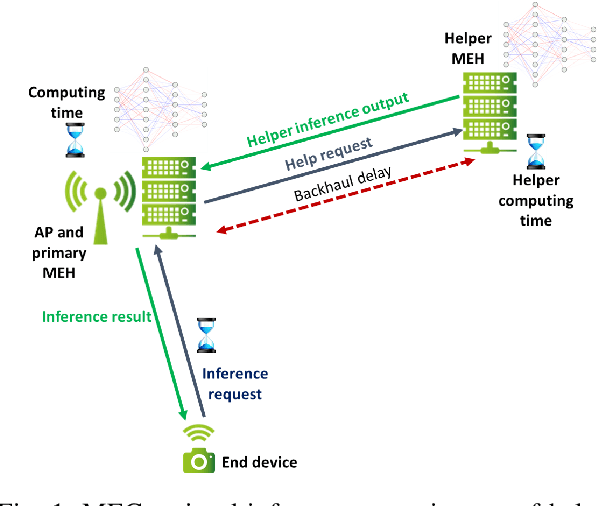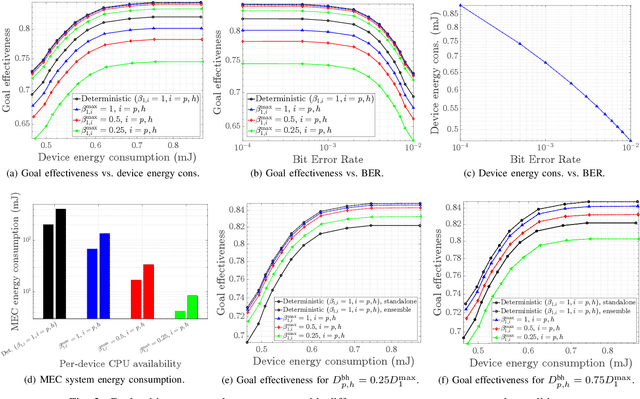Leonardo Gomes Baltar
6G goal-oriented communications: How to coexist with legacy systems?
Aug 25, 2023Abstract:6G will connect heterogeneous intelligent agents to make them operate complex cooperative tasks. When connecting intelligence, two main research questions arise to identify how AI and ML models behave depending on: i) their input data quality, affected by errors induced by interference and additive noise during wireless communication; ii) their contextual effectiveness and resilience to interpret and exploit the meaning behind the data. Both questions are within the realm of semantic and goal-oriented communications. With this paper we investigate how to effectively share spectrum resources between a legacy communication system and a new goal-oriented edge intelligence one. Specifically, we address the scenario of an eMBB service, i.e., a user uploading a video stream, interfering with an edge inference system, in which a user uploads images to a Mobile Edge Host that runs a classification task. Our objective is to achieve, through cooperation, the highest eMBB service data rate, subject to a targeted goal-effectiveness of the edge inference service, namely the probability of confident inference on time. We first formalize a general definition of a goal in the context of wireless communications. This includes the goal-effectiveness, as well as that of goal cost . We argue and show, through numerical evaluations, that communication reliability and goal-effectiveness are not straightforwardly linked. Then, after a performance evaluation aiming to clarify the difference between communication performance and goal-effectiveness, a long-term optimization problem is formulated and solved via Lyapunov optimization tools, to guarantee the desired performance. Finally, our numerical results assess the advantages of the proposed optimization, and the superiority of the goal-oriented strategy against baseline 5G compliant legacy approaches, under both stationary and non-stationary environments.
Effective Goal-oriented 6G Communications: the Energy-aware Edge Inferencing Case
Apr 20, 2022

Abstract:Currently, the world experiences an unprecedentedly increasing generation of application data, from sensor measurements to video streams, thanks to the extreme connectivity capability provided by 5G networks. Going beyond 5G technology, such data aim to be ingested by Artificial Intelligence (AI) functions instantiated in the network to facilitate informed decisions, essential for the operation of applications, such as automated driving and factory automation. Nonetheless, while computing platforms hosting Machine Learning (ML) models are ever powerful, their energy footprint is a key impeding factor towards realizing a wireless network as a sustainable intelligent platform. Focusing on a beyond 5G wireless network, overlaid by a Multi-access Edge Computing (MEC) infrastructure with inferencing capabilities, our paper tackles the problem of energy-aware dependable inference by considering inference effectiveness as value of a goal that needs to be accomplished by paying the minimum price in energy consumption. Both MEC-assisted standalone and ensemble inference options are evaluated. It is shown that, for some system scenarios, goal effectiveness above 84% is achieved and sustained even by relaxing communication reliability requirements by one decimal digit, while enjoying a device radio energy consumption reduction of almost 23% at the same time. Also, ensemble inference is shown to improve system-wide energy efficiency and even achieve higher goal effectiveness, as compared to the standalone case for some system parameterizations.
 Add to Chrome
Add to Chrome Add to Firefox
Add to Firefox Add to Edge
Add to Edge